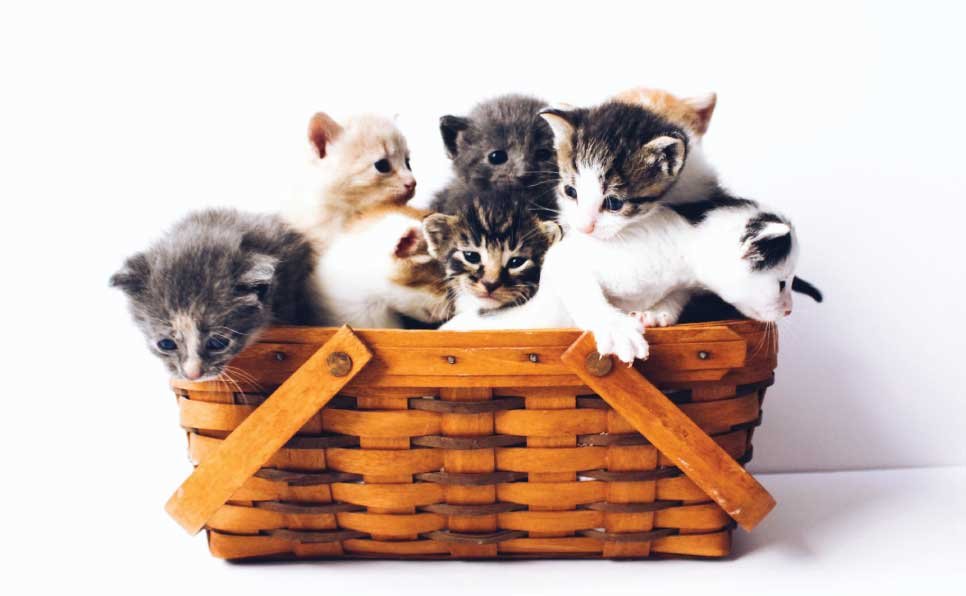Catnip is a herb that has a unique effect on cats. It contains a compound called nepetalactone, which binds to receptors in a cat’s nasal passages and triggers a euphoric response. This can cause cats to roll around, rub against the catnip, and exhibit other playful behaviors. Not all cats are equally susceptible to catnip, but about 70% of cats will respond to it in some way.
Catnip is special for cats because it is one of the few substances that can produce such a strong and predictable effect. It is also a safe and natural herb, so it is a great way to give your cat a little extra fun and excitement.
Introduction
Welcome to the world of Catnip. This seemingly unremarkable herb, scientifically known as Nepeta cataria, has been captivating cats for a long time. In this article, we will explore various aspects of Catnip, from its origins to its impact on our feline friends.
Caring for a cat is an opportunity to cherish and nurture a unique bond. To ensure their health and happiness, provide them with the essentials: a balanced diet, fresh water, a safe home, regular veterinary check-ups, and plenty of playtime.
Catnip isn’t just a simple distraction for your cat; it’s a herb that can turn your calm pet into an energetic acrobat and make him playfull and happy. Now, let’s take a journey through the world of Catnip.
Catnip: A Brief Overview
Catnip, a member of the mint family, has roots in Europe and Asia but has found a place in many households worldwide. Known for its aromatic leaves, Catnip contains a compound called nepetalactone, triggering a euphoric response in cats. Let’s delve into the details of Catnip through the following sections.
The historical roots of Catnip date back to ancient civilizations, where it gained recognition for its medicinal properties. Over time, Catnip spread across continents, adapting to different climates and becoming a favored treat for cats.
Nepetalactone Enchantment
The active component of catnip, nepetalactone, is a volatile oil that binds to receptors in a cat’s nasal passages. This interaction induces a cerebral response, leading to the release of endorphins – hormones associated with pleasure and elation. In some cats, nepetalactone acts as a mild sedative, reducing anxiety and promoting relaxation. This component casts a spell on our feline companions. Understand how it interacts with a cat’s sensory receptors, eliciting the responses that we enjoy witnessing.
Cultivating Your Own Catnip
Considering growing Catnip at home? Discover the techniques for cultivating this aromatic herb. From soil requirements to sunlight needs, we’ve got you covered for a successful Catnip garden. Catnip is a relatively easy plant to cultivate, providing a satisfying experience in harvesting fresh catnip for your cat.
- Choose a planting site: Select a sunny location in your garden or container receiving a minimum of 6 hours of direct sunlight daily.
- Prepare the soil: Improve the soil with compost or aged manure to create well-draining, fertile soil. Ensure the pH level is between 6.0 and 7.5.
- Sow the seeds: Directly sow catnip seeds into the prepared soil, maintaining a spacing of approximately 12 inches. Lightly cover the seeds with soil and water thoroughly.
- Provide moisture: Maintain consistently moist but not saturated soil. Catnip is drought-tolerant but benefits from regular watering during dry spells.

Catnip and Feline Behavior
Differentiate reality from myth as we examine feline sensitivity to Catnip. Observe changes in your pet’s behavior and gain insights into the mystique surrounding Catnip’s influence on our feline companions. Not all cats exhibit equal susceptibility to catnip, with approximately 70% showing a response, while others remain indifferent or even repelled by the herb. This variability is attributed to genetic differences in feline olfactory receptors.
Cats often respond to catnip by rubbing against it, engaging in acrobatic rolls, and chewing or batting at it. Some may engage in playful antics such as tail chasing or exuberant jumps. A few cats become momentarily more vocal, intensifying their purring or meowing. These playful displays are often interpreted as ways for cats to express their excitement and joy. Moreover, catnip serves to alleviate stress and anxiety in cats, positioning it as a valuable tool for relaxation and enjoyment.
Catnip for Instruction or Amusement
Reveal the potential of Catnip as a training aid. Whether teaching new tricks or reinforcing positive behavior, Catnip proves to be a useful asset in your training arsenal.
- Extend catnip-infused toys: Fill toys with dried catnip or insert the herb into a small plush toy, allowing your cat to enjoy the fragrance and texture. Explore the pros and cons of commercially available options. Treat your cat to toys that not only entertain but also offer a sensory experience.
- Sprinkle catnip on furnishings: Scatter a small amount of dried catnip on your cat’s preferred scratching post or bed to stimulate playful engagement.
- Concoct catnip tea: Boil a cup of water and add a few tablespoons of dried catnip. Let it steep for 5-10 minutes, then allow the tea to cool before offering it to your cat.

Catnip for Well-being Benefits
Beyond its role in playfulness, Catnip offers health benefits to your cat. Understand how it aids in stress reduction, mitigates anxiety, and serves as a natural insect repellent.
Catnip, known for inducing playful behavior in cats, contains nepetalactone—an active ingredient that binds to receptors in a cat’s nasal passages. This interaction triggers the release of endorphins, fostering feelings of pleasure and happiness. Additionally, some cats may experience a mild sedative effect, reducing anxiety and promoting tranquility.
While scientific exploration of the health benefits of catnip for cats remains limited, anecdotal evidence suggests a range of advantages, including stress reduction, mood enhancement, improved appetite, antibacterial and antiviral properties, potential pain relief, and increased social interactions.

Catnip versus Alternatives
Contrast Catnip with alternatives like Silver Vine and Valerian Root. Understand the distinctive attributes of each and determine the optimal choice tailored to your cat’s preferences.
A. Catnip stands as the most recognized and prevalent herb for cats, featuring nepetalactone—the active ingredient provoking responses in cats’ olfactory receptors. This results in playful behavior, heightened vocalization, and, in some cases, mild sedation. Approximately 70% of cats respond positively to catnip, highlighting its variable effects.
B. Silver Vine or Matatabi, represents another herb inducing playful behavior in cats. It houses actinidine—an active ingredient believed to operate similarly to nepetalactone. However, silver vine exhibits lower potency than catnip, prompting cats to roll rather than engage in pouncing or chasing. It is less ubiquitous than catnip and may pose a challenge to procure.
C. Valerian Root seldom triggers playful behavior in cats, instead exerting a calming influence that reduces anxiety and induces relaxation. This stems from its valerenic acid content, interacting with GABA receptors in the brain. Valerian root is frequently employed as a natural sleep aid for cats.
Catnip Safety Measures
Catnip is a safe and natural herb for most cats, but it’s important to use it in moderation and be aware of potential side effects to ensure your cat’s well-being. If your cat experiences vomiting, diarrhea, or excessive drooling after ingesting catnip, stop giving it to them and consult a veterinarian.
It is also advised to avoid giving catnip to pregnant or nursing cats as it could act as a mild sedative and safety concerns remain regarding its effects on unborn or nursing kittens. If your cat seems uninterested in catnip, it’s probably because they’re not sensitive to it. About 30% of cats don’t experience its effects, and that’s perfectly normal.
To ensure a safe and enjoyable experience for your cat with catnip, follow these general guidelines:
- Do not give catnip to pregnant or nursing cats.
- Introduce catnip to your cat gradually and closely observe their reaction.
- Don’t force catnip on your cat if they’re not interested.
- Store catnip in an airtight container to maintain its freshness.
Catnip: Frequently Asked Questions (FAQs)
Absolutely! While sensitivity may vary, most cats, regardless of breed, can indulge in the pleasures of Catnip.
Moderation is key. Limit Catnip exposure to once every two weeks to maintain its effectiveness.
Certainly! Silver Vine and Valerian Root are excellent alternatives that offer similar stimulating effects.
When used in moderation, Catnip is safe. However, excessive exposure may lead to desensitization, so it's crucial to monitor usage.
Introduce Catnip to kittens gradually. Most kittens show little to no reaction until they are around three to six months old.
Absolutely! Catnip can be a fantastic tool for positive reinforcement during training sessions.
Conclusion
In summary, understanding catnip is like cracking a code for cat enthusiasts and their pets. This unique herb, similar to mint, triggers a lively show of tail twitches and contented purrs in our cats. Grasping how catnip functions, thanks to the special ingredient called nepetalactone, adds an interesting layer to our comprehension of our feline companions and their amusing behaviors.
Being a responsible cat owner involves using catnip judiciously. Whether your cat goes wild for it or simply sniffs and moves on, our guide provides insights to make the most of these moments. From recognizing that not all cats are affected by catnip to cultivating your own stash for ongoing feline amusement, this journey revolves around creating enjoyable experiences for you and your four-legged friend. So, brace yourself for a pragmatic exploration filled with purrs, playful antics, and the intriguing realm of catnip that deepens the connection between you and your cat.




